- With standard equipment
- With safety pack
Find more information in the General Comments section of the assessment
Find more information in the Rating Validity tab of the assessment
- See More
- See More
- See More
- See More
- Good
- Adequate
- Marginal
- Weak
- Poor
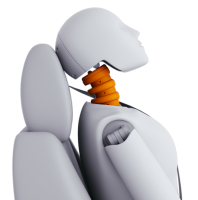 Rear Seat
Rear Seat
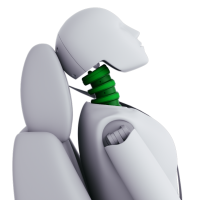 Front Seat
Front Seat
- Good
- Adequate
- Marginal
- Weak
- Poor
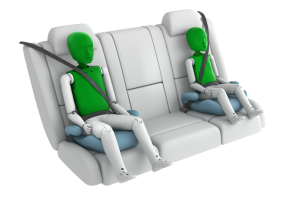
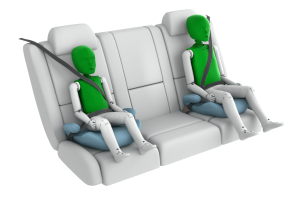
Passenger
outboard
center
Fitted to the vehicle as standard
Not fitted to the test vehicle but available as option
Not Available
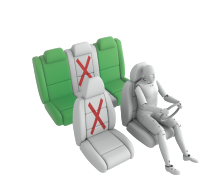
Easy
Difficult
Safety critical
Not allowed
-
Airbag ON
Rearward facing restraint installation not allowed
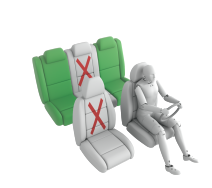
Easy
Difficult
Safety critical
Not allowed
-
Airbag ON
Rearward facing restraint installation not allowed
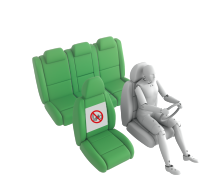
Easy
Difficult
Safety critical
Not allowed
-
Airbag ON
Rearward facing restraint installation not allowed
In both the frontal offset and the side barrier tests, protection of all critical body areas was good for the both 6 and 10 year dummies, and the Cadillac OPTIQ scored maximum points in this part of the assessment. The front passenger airbag can be disabled to allow a rearward-facing child restraint to be used in that seating position. Clear information is provided to the driver regarding the status of the airbag and the system was rewarded. The Cadillac OPTIQ is equipped with a direct 'child presence detection' system, which issues a warning when it detects that a child or infant has been left in the car. All of the child restraint types for which the Cadillac OPTIQ is designed could be properly installed and accommodated in the car.
- Good
- Adequate
- Marginal
- Weak
- Poor
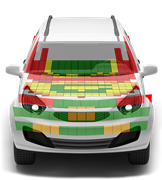
Pedestrian & Cyclist Head 9.7 Pts
Pelvis 2.1 Pts
Femur 4.2 Pts
Knee & Tibia 7.7 Pts
| System Name | Front Pedestrian and Bicyclist Braking | ||
| Type | Auto-Brake with Forward Collision Warning | ||
| Operational From | 8 km/h | ||
| PERFORMANCE | | |||
Protection of the head of a struck pedestrian or cyclist was largely good or adequate, with poor results recorded on the stiff windscreen pillars and at the base of the screen. Protection of the pelvis was mixed, some areas offering good protection and others poor. Protection of the femur was mostly good, while that of the knee and tibia was good or adequate at all test locations. The autonomous emergency braking system of the Cadillac OPTIQ responds to vulnerable road users such as pedestrians and cyclists, as well as to other vehicles. In tests of its response to pedestrians, the system performed well, including the protection offered to those to the rear of the vehicle. The system also performed well in tests of its reaction to cyclists, including ‘dooring’, in which a door is opened into the path of a cyclist approaching from behind. The system’s response to motorcyclists was good, the car scoring full points in this part of the assessment.
- Good
- Adequate
- Marginal
- Weak
- Poor
| System Name | Intelligent Adaptive Cruise Control and Traffic Sign Recognition |
| Speed Limit Information Function | Camera & Map, subsigns supported |
| Speed Control Function | Intelligent ACC (accurate to 5km/h) |
| Applies To | Front and rear seats | ||
| Warning | Driver Seat | Front Passenger(s) | Rear Passenger(s) |
| Visual | |||
| Audible | |||
| Occupant Detection | |||
|
|||
| System Name | Driver Attention Assist |
| Type | Direct eye monitoring |
| Operational From | 10 km/h |
| Fatigue | Drowsiness, Microsleep and Sleep |
| Distraction | Long & Short Distraction and Phone Use |
| Impairment | Unresponsive Driver |
| System Name | Lane Keep Assist with Lane Departure Warning |
| Type | LKA and ELK |
| Operational From | 50 km/h |
| Performance | |
| Emergency Lane Keeping | |
| Lane Keep Assist | |
| Human Machine Interface | |
| System Name | Enhanced Automatic Emergency Braking | |||
| Type | Autonomous emergency braking and forward collision warning | |||
| Operational From | 4 km/h | |||
| Sensor Used | camera and radar | |||
Overall, the performance of the autonomous emergency braking (AEB) system was adequate in tests of its reaction to other vehicles. A seatbelt reminder system is fitted as standard to the front and rear seats. The car has a direct driver status monitoring system as standard, detecting driver fatigue and some types of distraction. The lane support system gently corrects the vehicle’s path if it is drifting out of lane and also intervenes in some more critical situations. The speed assistance system identifies the local speed limit. The driver can choose to allow the limiter to be set automatically by the system.
- Specifications
- Safety Equipment
- Videos
- Rating Validity
Specifications
Tested Model Cadillac OPTIQ, 'Premium Sport', AWD, LHD
Body Type - 5 door hatchback
Year Of Publication 2025
Kerb Weight 2377kg
VIN From Which Rating Applies - all OPTIQs
Class Small SUV
Safety Equipment
Note: Other equipment may be available on the vehicle but was not considered in the test year.
Fitted to the vehicle as standard
Fitted to the vehicle as part of the safety pack
Not fitted to the test vehicle but available as option or as part of the safety pack
Not available
Not applicable
Videos
Rating Validity
Variants of Model Range
| Body Type | Engine | Model Name/Code | Drivetrain | Rating Applies | |
|---|---|---|---|---|---|
| LHD | RHD | ||||
| 5 door hatchback | Electric | Premium Sport AWD * | 4 x 4 |  |
 |
* Tested variant

Find more information in the General Comments section of the assessment
 Share
Share

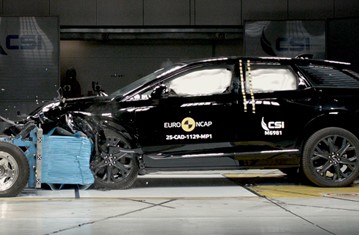
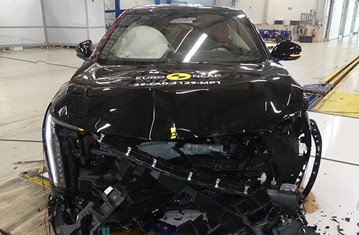
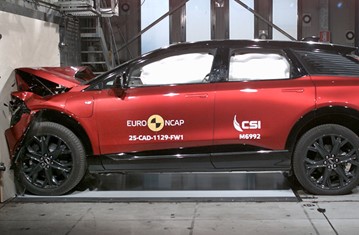
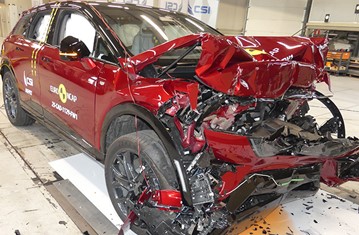
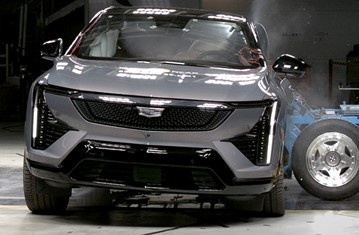
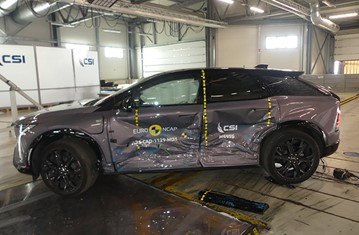
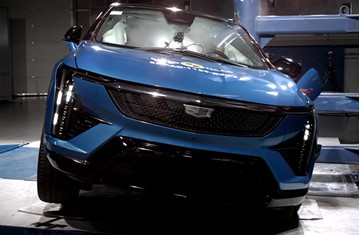
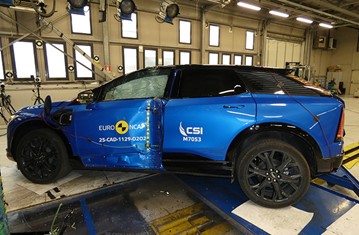

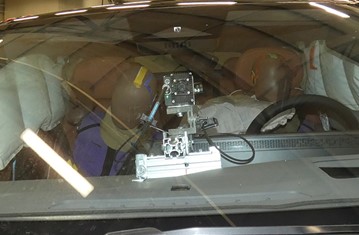


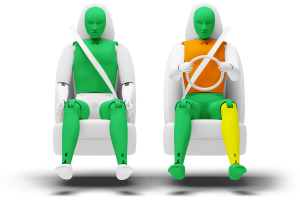
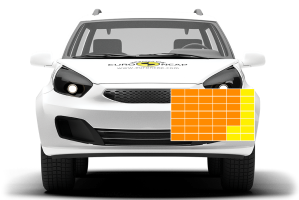
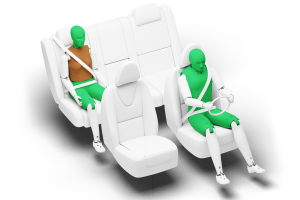
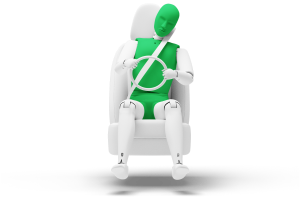
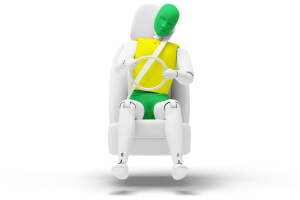
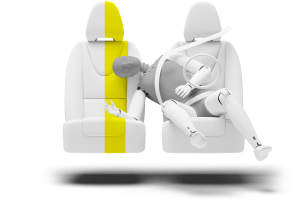


The passenger compartment of the Cadillac OPTIQ remained stable in the frontal offset test. Protection of all critical body regions was good for the front passenger. Dummy readings indicated good protection of the knees and femurs of both the driver and the front seat passenger. Cadillac showed that a similar level of protection would be provided to occupants of different sizes and to those sitting in different positions. Analysis of the deceleration of the impact trolley during the test, and analysis of the deformable barrier after the test, revealed that the Cadillac OPTIQ would be a moderately benign impact partner in a frontal collision. In the full-width rigid barrier test, protection was good for all critical body regions of the driver but chest protection was rated as weak for the rear passenger, based on dummy readings of compression. In the side barrier test, the Cadillac OPTIQ provided good protection to all critical body areas and scored maximum points. In the more severe side pole impact, protection was at least adequate for all critical body areas. Control of excursion (the extent to which a body is thrown to the other side of the vehicle when it is hit from the far side) was found to be adequate. The Cadillac OPTIQ has a countermeasure to mitigate against occupant-to-occupant injuries in such impacts. In Euro NCAP’s tests, dummy readings indicated good protection. However, Cadillac did not demonstrate that the performance would be robust/symmetrical and a penalty was applied. Tests on the front seats and head restraints demonstrated good protection against whiplash injuries in the event of a rear-end collision. However, a geometric analysis of the rear seats indicated marginal whiplash protection. The car has an advanced eCall system which alerts the emergency services in the event of a crash, and a system to prevent secondary impacts after the car has been in a collision. Cadillac demonstrated that the doors would be openable to allow occupants to escape in the event of vehicle submergence.